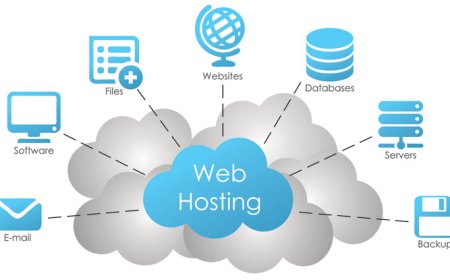Rethinking Business Networks: Building a Quality-Driven, Value-Creating Community in Your City

Introduction: The Problem with Mainstream Business Networks
In most cities today, business networking has become synonymous with formulaic meetings, templated agendas, and a relentless focus on quantity over quality. Corporate-run business networks often emphasize metrics like the number of members, weekly visitor count, or referral quotas. While these models may have scalability and consistency on their side, they often lack authenticity, creativity, and meaningful value.
Entrepreneurs, freelancers, creators, and purpose-driven professionals are increasingly disillusioned with such systems. They crave spaces where collaboration is more than a buzzword, where members aren't reduced to sales leads, and where human connection precedes transactions. If you're looking to create a business network in your city that truly stands out, this guide is for you.
1. Start with Vision: Define the "Why"
Before launching any initiative, ask yourself: Why does this network need to exist? Your vision must go beyond making money or hosting events. Consider:
-
What gap are you trying to fill?
-
Who are you creating this for?
-
What kind of culture do you want to build?
For example, a network built around ethical business practices, conscious capitalism, or creative collaboration immediately sets itself apart from traditional profit-first groups.
Tip: Write a clear mission statement that reflects your values, and let it guide every decision from branding to event planning.
2. Curate, Don't Accumulate: Be Intentional About Membership
One of the biggest differentiators of a quality network is who is part of it. Instead of allowing open registrations or relying on quotas, adopt a curated approach:
-
Create an application or nomination process.
-
Interview potential members to ensure alignment of values.
-
Prioritize diversity of thought, background, and industry.
-
Limit membership to foster intimacy and trust.
Quality Tip: Seek out individuals who are givers, not takers. The true strength of a network lies in how much members are willing to support each other without expectation.
3. Build Around Experience, Not Just Events
While events are a key part of any network, they should be seen as touchpoints of engagement, not the entire offering. Focus on creating a holistic experience:
-
Host intimate gatherings like mastermind circles, fireside chats, or co-creation labs.
-
Introduce shared learning formats such as book clubs, skill swaps, or workshop exchanges.
-
Foster off-grid connections through retreats, impact days, or hobby-based meetups.
Engagement Insight: People remember how you made them feel. Design events that surprise, delight, and emotionally connect.
4. Prioritize Depth Over Width
Most networks expand horizontally—adding more people, more locations, more events. Instead, go deep:
-
Enable members to form smaller pods or chapters based on interests or industries.
-
Encourage long-term collaborations and partnerships.
-
Introduce peer-mentoring formats or collaborative problem-solving sessions.
-
Maintain member continuity rather than constant churn.
Quality Check: Regularly check in with members to understand what’s working, what’s not, and what could deepen their involvement.
5. Focus on Storytelling and Visibility of Members
Make your members the heroes of the network. Instead of talking about the network itself, showcase the people in it:
-
Feature member stories on your blog, podcast, or newsletter.
-
Create behind-the-scenes content that highlights their work, challenges, and values.
-
Use social media to amplify their successes and promote their offerings.
Marketing Wisdom: People join communities where they feel seen, celebrated, and supported. Make your members feel like co-founders, not just attendees.
6. Create a Strong Digital-Physical Hybrid Ecosystem
In a post-pandemic world, networks need to exist in both physical and digital spaces. Build a hybrid model:
-
Use tools like Slack, Discord, or Circle for day-to-day communication.
-
Host virtual meetups or coworking sessions.
-
Offer digital content, recordings, and forums for ongoing learning.
-
Balance this with regular in-person events that build deeper rapport.
Infrastructure Tip: Invest in a simple, branded digital platform where members can share updates, resources, job leads, and opportunities.
7. Stand for Something Bigger: Anchor in Purpose
The best communities are rooted in a purpose greater than their individual members. Integrate social impact, civic engagement, or shared values:
-
Support local causes, non-profits, or sustainability initiatives.
-
Collaborate with artists, educators, and changemakers.
-
Host events that aren't just about business, but also about meaning and responsibility.
Impact Tip: Make giving back part of your brand. Not just as charity, but as systemic contribution.
8. Avoid Over-Structuring: Leave Space for Emergence
Too many networks collapse under the weight of over-management. Leave room for member-led initiatives and organic growth:
-
Empower members to host or co-create events.
-
Introduce rotating leadership models or co-hosts.
-
Allow spontaneous collaborations and projects to flourish without gatekeeping.
Design Insight: Communities thrive when they’re shaped not controlled. Trust your members.
9. Measure What Matters
Instead of tracking vanity metrics like attendance or referrals, evaluate deeper impact:
-
How many genuine collaborations were born?
-
Are members feeling more fulfilled, seen, and supported?
-
Has the community led to personal and professional transformation?
Evaluation Tip: Use quarterly reflection sessions and member surveys focused on impact, experience, and emotional resonance.
10. Craft an Identity and Culture That’s Irresistible
Culture is the soul of your network. Define rituals, language, and aesthetic elements that make your community unmistakably different:
-
Give your events quirky, playful names.
-
Design custom welcome kits or onboarding rituals.
-
Create inside jokes, shared traditions, or symbolic gestures.
Branding Note: A strong brand isn’t just visual—it’s emotional. Build an identity that people are proud to belong to.
Final Thoughts: A Movement, Not Just a Meetup
What you’re building isn’t a network. It’s a movement—a shared belief in doing business differently, more humanely, more creatively, and more consciously. The world doesn’t need another referral group or sales circle. It needs spaces where people are free to connect as humans first, professionals second.
If you get the intention right, everything else—growth, visibility, impact—will follow.
And remember: quality scales better than quantity when you build from the inside out.
By Shivam Parikh
Founder of Khichdi Network
Passionate about purposeful entrepreneurship, creative collaboration, and communities that matter.
Interested in starting your own unique business network or collaborating on events that matter? Let’s connect.
What's Your Reaction?
 Like
0
Like
0
 Dislike
0
Dislike
0
 Love
0
Love
0
 Funny
0
Funny
0
 Angry
0
Angry
0
 Sad
0
Sad
0
 Wow
0
Wow
0







































































